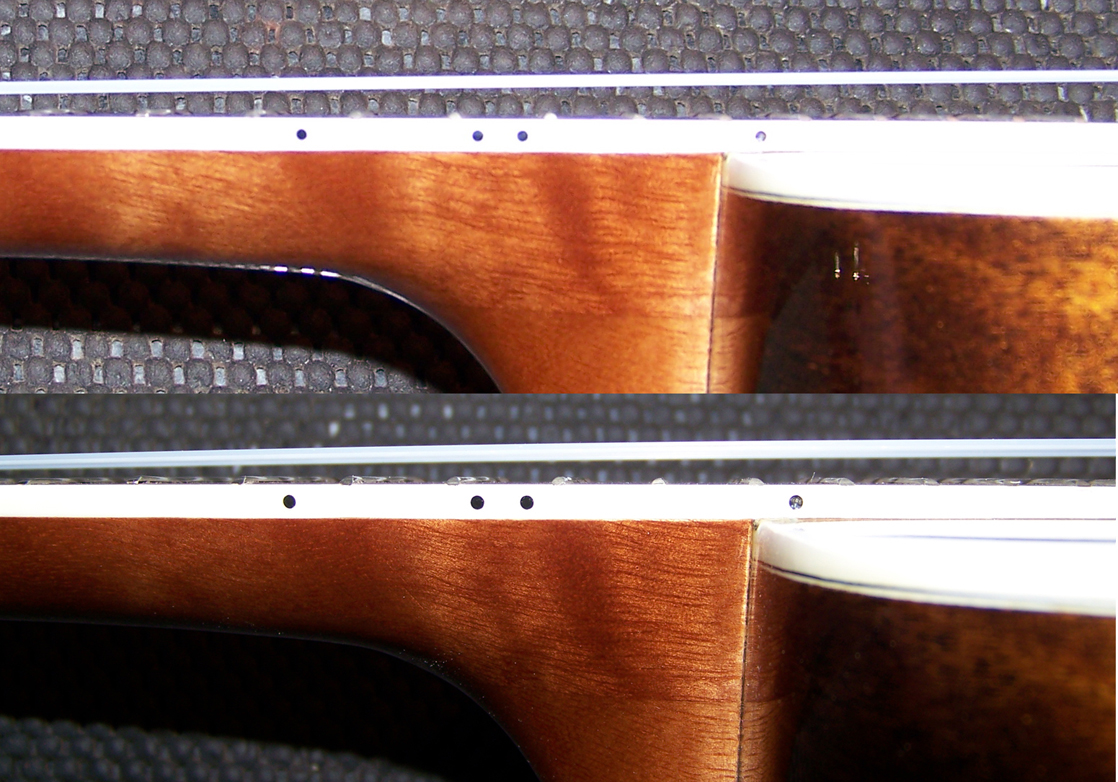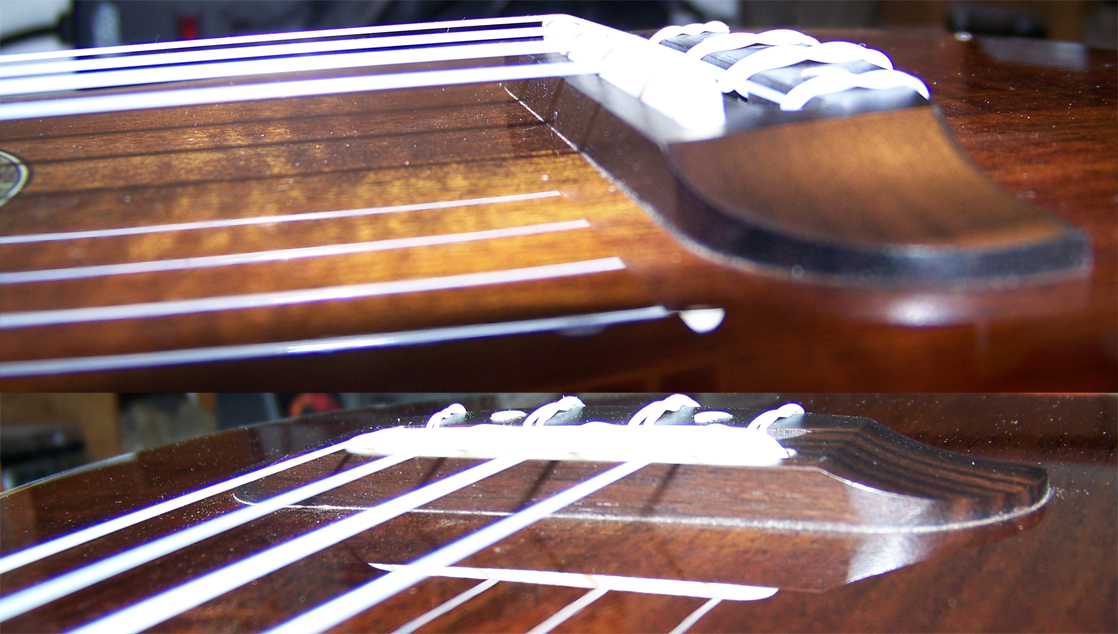Why?
Good question, why would a brand spanking new instrument need work already? Well, when it comes to the action of guitars and similar instruments, there are a wide range of players with different preferences and playing styles to be considered that may determine a standard action used by manufacturers.
That being said, There is no real excuse for a ridiculously high action on a brand new instrument! If anything on instruments with adjustable saddles, it is a good idea to show off a great fret job by having a really low action, as it can be raised for a player who never uses a light touch. In my experience a high action on a new or used instrument is often a sign of an inaccurate fret job, and is a way of hiding fret buzz from potential buyers.
Most acoustic instruments do not have adjustable saddles, so a medium action is not necessarily undesirable, and therefor more acceptable. Even if the buyer has to pay someone like me to lower the action by shaving down the saddle, or making a new one to raise the action, manufacturers have to find a happy medium.
In the case of this Ukelele, the action was way to high for anyone but Tiny Tim, who was like 7'3" tall and over 280lbs in weight, and there should be no excuse for it, especially because it is the high end of Washburn's sub brand: Oscar Schmidt. I mean look at it, solid koa top, sides and back, "Abalam" (A laminated sheet of resins and abalone) inlays in the binding and in the fingerboard...

At a retail price of around $400 there is no excuse for an action higher than 3.5mm at the 12th fret, and this one was at 5.8mm to 6mm average.
The work:
First of all I checked the fret job for inaccuracies, and proper bow, and it passed the tests. Since there is such a thing as nut action, I checked that too, and found the center two strings to be higher than would support good intonation. On the subject of intonation, I had to lower the saddle first in order to check it, and then adjust it accordingly within the limited range supported by the thickness of the saddle.
I started by lowering the string grooves in the nut to where the space above the first fret (while fretted at the second) was equal to that of every other fret (fretted one higher and one lower), as the nut is essentially the zero fret.
Next I lowered the saddle by a safe amount from the bottom, considering the gauges and pitch of the strings, and then lowered it some more, a little bit at a time. Each time bringing the instrument back up to pitch, and playing it normally, and then hard enough to try and force a buzz. The procedure has to be repeated until the action is low enough to play it as hard as its owner showed me he would not exceed, without fret buzz, and that's the hardest part for obvious reasons. I also left a tiny bit of leeway, as I would still have to take some down for intonation. Here are before and after pictures of the action, although it is only as good as my camera aim, and therefor not the best gauge, there is no way for You to experience it via the internet.

Not done yet:
I did mention intonation, and no instrument is worth playing or desirable without good intonation. With the action in a good place I checked the intonation, and it was slightly flat on all four strings. Luckily, the top of the saddle was rounded, and by flattening the top, and cutting slight well spaced notches for the strings, I got it to be sharp on 3 of the four strings, and one right on. The notches serve to prevent lateral movement of the strings, and ensure consistent string spacing. If the intonation were still flat at this point, the only way to fix it would be to widen the saddle groove and make a new wider saddle, which I narrowly escaped.
Now all I had to do is taper the front of the string notches of the sharp strings just enough to draw each string into proper intonation, using a precise tuner and most of all my precise ears for measurement.
I filed radii in both ends of the saddle in order to prevent discomfort, as they were way to square from the factory, and fine finished the saddle to be neat, clean and smooth. here are the saddle before and after pictures. Sorry for the extreme whiteness in the shots, but without manual settings on my camera, I have not found a way around that yet.

As always the final test is the customers reaction and feedback, and lucky for me I had performed to his satisfaction, and above his expectations. Besides just the job at hand, it really does come down to the finer details.
Final comments:
As You may have gathered, this is tedious work that takes longer than it would seem, due to having to loosen the strings enough to raise and slide out the saddle, filing and sanding (staying square) and then bring them back up to pitch over and over again.
If I ever get into building acoustic instruments, I already have designs for fully adjustable saddles, that will not hamper the sound, or cause other trouble, and allow the instrument to be set up much easier. I tend to throw out tradition in favor of technology, as one can not move backwards into the future.